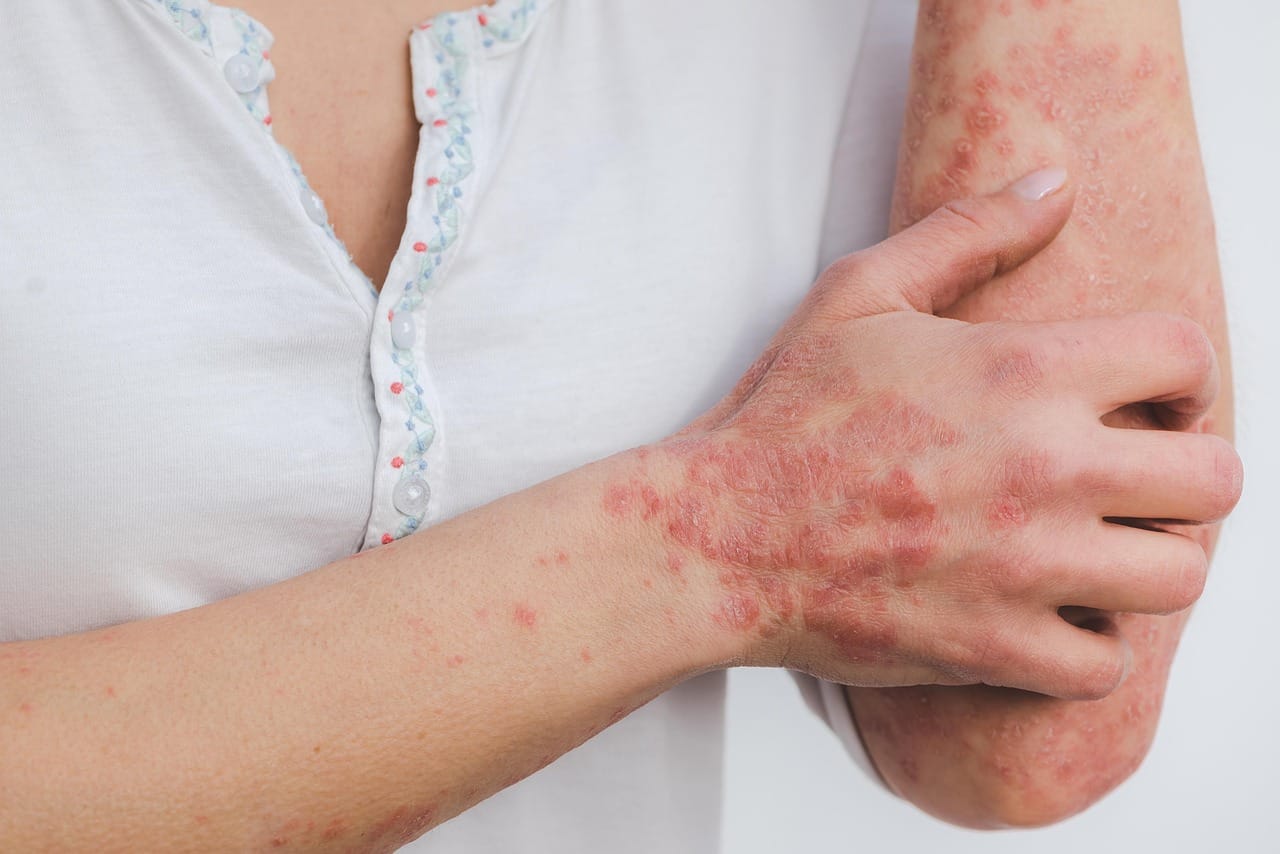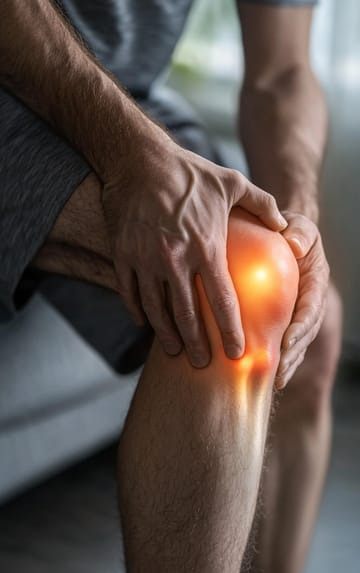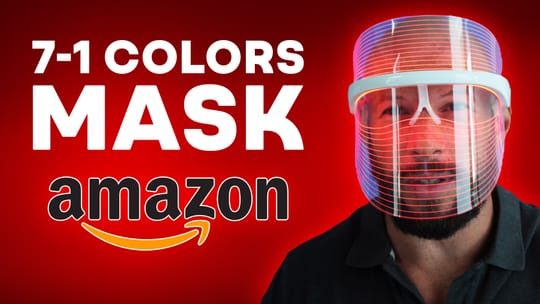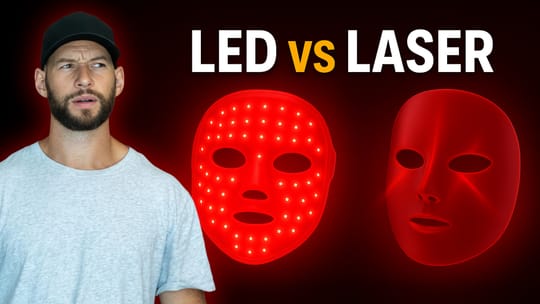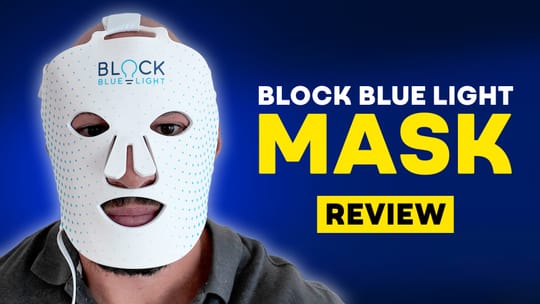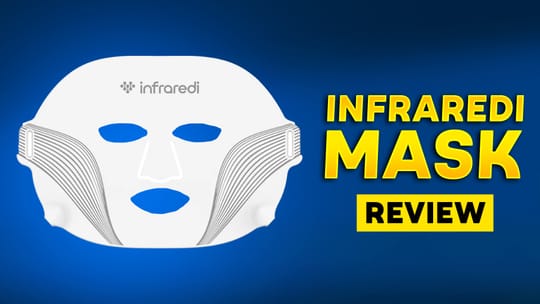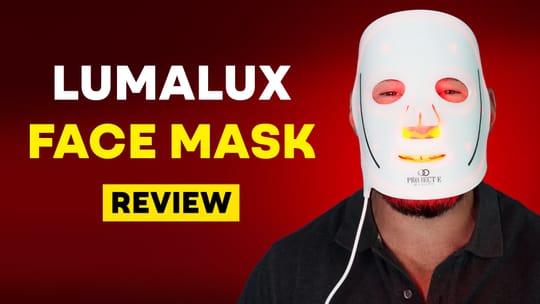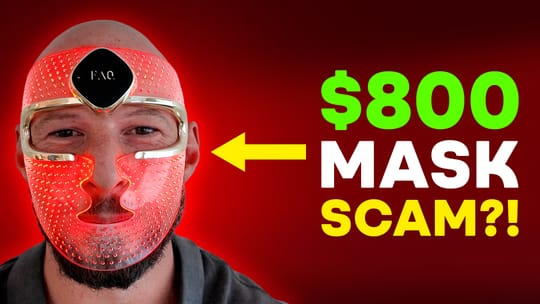Yes, psoriasis is horrible and I know you'll want to fix that condition as quickly as possible! Or, at least, achieve huge improvements in how psoriasis not only affects your skin but your daily life.
We've been getting lots of questions and feedback in our Facebook group about red light therapy for psoriasis, such as:
- "Does red light therapy help psoriasis?"
- "What are the best red light therapy for psoriasis at home devices?"
- "How about red light therapy for scalp psoriasis - is treatment different there?"
I'll cover all of these questions in my article below! If you're short on time, just read the summary below:
Psoriasis is a chronic inflammatory skin condition that affects more children than adults. An overactive immune system plays a central role in its development. Psoriasis increases your risk of other health conditions, such as heart and blood vessel disease, joint problems, diabetes, and mental health disorders. Two percent of the global population is affected by psoriasis, but more when people live further away from the equator (hint!).
Different types of psoriasis exist, and plaque psoriasis is the most common form (80 - 90% of people). Treatment often exists of topical creams and medicine and oral pharmaceuticals if the psoriasis is severe. Light therapy has also been part of that equation for decades - for good reasons!
Different types of light therapy show great promise for psoriasis - ultraviolet, blue, red, and near-infrared light do the trick. Blue light reduces redness and scaling but high power and doses are used in many studies. Ultraviolet light, especially UVB (that creates vitamin D in the skin) is the gold standard but is routinely administered by dermatoligist. Use UV light at your own risk, and always consult your physician!
Red and near-infrared light with 600–1000 nm wavelengths generally show very positive outcomes as well but use higher doses of 100 - 200 J/cm2 in some studies and high power. More red and blue light therapy studies are needed, however, but existing studies are very promising!
At the end of this article, I recommend devices that emit lots of blue light and give a UV option. You'll need proper dosing, however, and close monitoring of your skin response and health - and avoid sunburn or increased symptoms at all costs! A healthy lifestyle, which includes proper sleep and nutrition are als important for having proper skin repair mechanisms if you use blue and ultraviolet light for psoriasis treatment!
If you need an introduction to what these terms mean, check the following resources:
- What Is Red Light Therapy?
- Red Light Therapy Explained: Basic Terms Guide
- Start Here - Light Therapy 101 & Buyers Guide
- Red Light Therapy Dosing Chart: The Raw Data From Hundreds Of Studies
- Red Light Therapy Dosing: Why It's Complicated!
- Red Light Therapy Wavelengths Benefits: The Ultimate Guide
- How Often Should You Use Red Light Therapy Explained
These resources should give you a basic understanding of how red light therapy works, and the discussions around it!
What We Know About Psoriasis: Science 101
First up, let's consider what psoriasis is. I'll consider recent scientific reviews here, which analyze and integrate all high-quality publications on the topic (1; 2; 3; 4; 5; 6; 7; 8; nanoparticles).
Psoriasis Basics: Pathology, Risk Factors & More
Psoriasis is a complex inflammatory condition that shows itself in skin problems (1). The condition originates through an interplay of genetics and environmental risk factors (1). An overactive immune system, leading to imbalance in the body's inflammatory messenger compounds called "cytokines", plays a major role here (1).
With psoriasis, your risk of other health conditions increases (1). Examples here are heart and blood vessel disease, type II diabetes and metabolic syndrome, and inflammatory diseases such as arthritis and mental health problems (1; 2). Heart and blood vessel disease risk increases by 50% alone with psoriasis (7).
We've seen similar trends in other related topics that I've treated concerning skin health, such as red light therapy for eczema. Both conditions are similar, and yet, different. Here's what researchers say about that link:
"Except for cardiometabolic diseases, gastrointestinal diseases, chronic kidney diseases, malignancy, and infections that have received much attention, the association between psoriasis and more systemic diseases, including the skin system, reproductive system, and oral and ocular systems has also been revealed, and mental health diseases draw more attention not just because of the negative mental and mood influence caused by skin lesions, but a common immune-inflammatory mechanism identified of the two systemic diseases." (3)
About 2% of the world's population is affected by psoriasis (1). Psoriasis occurs more the further away you live from the equator (10; 11). That data point is interesting because as it will turn out, an absence of light exposure far away from the equator (weaker sun; colder temperatures that push people indoors and have them clothed) may explain part of the condition. As different types of light improve psoriasis - soon I'll make the case that red, near-infrared, blue, and UV light all improve the condition - the equatorial datapoint is interesting for sure!
For mild psoriasis, topical treatments and vitamin D treatments are routine (2). These topical treatments aim to inhibit an overactive immune system, generally. With more severe psoriasis, you may need to take oral medicine as well (2). Still, that medication often doesn't completely control symptoms!
Different Psoriasis Types
However, different types of psoriasis exist and these don't all require similar treatment (12; 13):
- Plaque psoriasis is the most common type, affecting 80 - 90% of people with psoriasis. Here, you'll have raised red patches on the skin that also scales white. Most commonly, the scalp I talked about in the introduction, elbows, knees, and lower back are affected. As some of these areas are easily visible, they lead to aesthetic issues as well, which affect people's confidence and quality of life!
- Then there's guttate psoriasis affecting 10% of cases. Here, you'll have small, drop-shaped lesions, often triggered by streptococcal infections. This psoriasis form is most commonly found in your midsection, arms, and legs, and it affects the young more often.
- Next up, there's inverse psoriasis with 3 - 7% of cases, and more often affect you if you're overweight or obese. The skin under the arms and groin is most often affected, and sweating or friction due to movement worsens psoriasis.
- Nail psoriasis occurs in up to 50% of psoriasis patients and affects both the hands and toes. The nails themselves are affected here, whereby they have pitting, thickening, discoloration, and separation from the nail bed. No bueno!
- Psoriatic arthritis affects about 30% of psoriasis cases. Here, you're more often affected years after skin symptoms. With psoriatic arthritis, you'll also have an 80% chance of getting nail psoriasis. As the name already implies, with psoriatic arthritis, you'll have overlapping symptoms with arthritis!
- Then, there are rare psoriasis forms. Examples here are erythrodermic psoriasis and pustular psoriasis, which I won't cover here. These two types may also need (emergency) medical attention when they're bad, so talk to your doctor if you suspect these forms!
These psoriasis forms overlap. Currently, psoriasis is a chronic condition without a cure (12). Psoriasis has an autoimmune system component, meaning that your immune system attacks your body's own cells. Let's continue talking about that immune system and inflammation:
Psoriasis Treatment
Bringing systemic inflammation down is the main treatment vector here (4). This process may be more individualized for different inflammatory biomarkers in the future (4). Here's what researchers write about this bright development:
"Cutting-edge research studies and comprehensive insights into psoriasis pathogenesis, fostering novel genetic, epigenetic, and immunological factors, have generated a spectacular improvement over the past decades, securing the path toward a specific and targeted immunotherapeutic approach and delayed progression to inflammatory arthritis." (5).
So progress here is very hopeful! New therapies, such as nanoparticles, allow for topical treatment with fewer side effects (8). You'll want early treatment with psoriasis and symptom management, as the problems tend to escalate over time (9). Joint, eye, intestinal, metabolic, heart and blood vessel issues follow beyond the phase where just the skin is affected (9).
Next up, I'll look at the role red light therapy for psoriasis can play. But first, let's consider the benefits of red light therapy for skin health and beauty in general:
How Do Red And Infrared Light Affect The Skin In General?
So first let's talk about light therapy and skin health in general. I'll come back to psoriasis in the next section of this article. I've written a very extensive guide on red light therapy for skin health. I'll briefly summarize my argument of that article here:
Red light therapy has a vast potential for skin health in general. This is true for both beauty purposes as well as anti-aging and countering skin conditions. With regard to beauty, red light therapy will reduce wrinkles, aid collagen production and elasticity, boost hydration, and prevent and treat sun damage. And because red light therapy works so well, it's exploding in popularity!
The best-proven wavelengths for skin beauty are located in the 620 - 670 nm range. For dosing, you'll have to use a 3 - 15 J/cm2 dose which has great results in most studies. For specific cases, you may also want to add amber light or blue light.
Generally, however, we need more high-quality studies in relation to beauty. And while mostly positive, a rare number of red light therapy users report side effects such as increased facial hair or overuse-related pigmentation changes. I'll come back to these changes in a moment!
The good thing is that red light therapy also has the potential to treat acne, eczema, rosacea, wound healing, and sun damage! The future is bright for light therapy!
Other Skin Conditions That Light Therapy Can Treat
The good news here is that I've written quite a few articles on red light therapy for different skin conditions and beauty. Here are a few important articles:
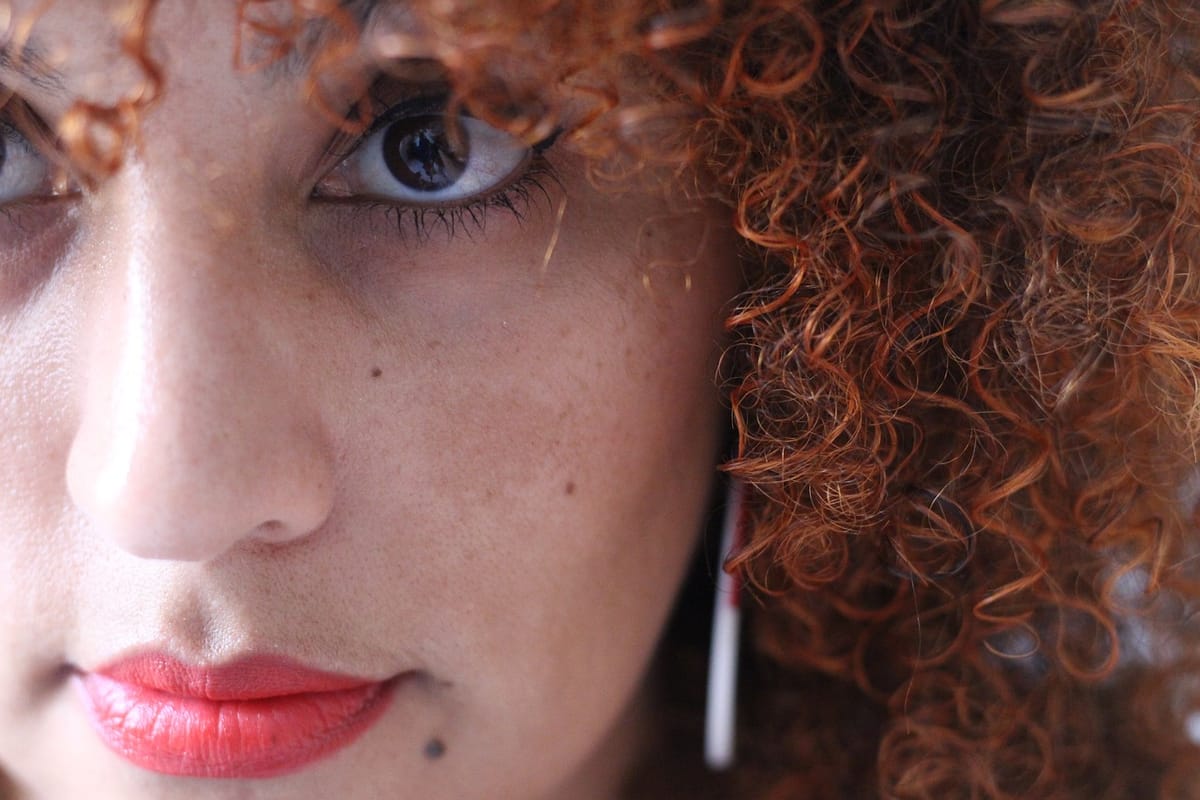
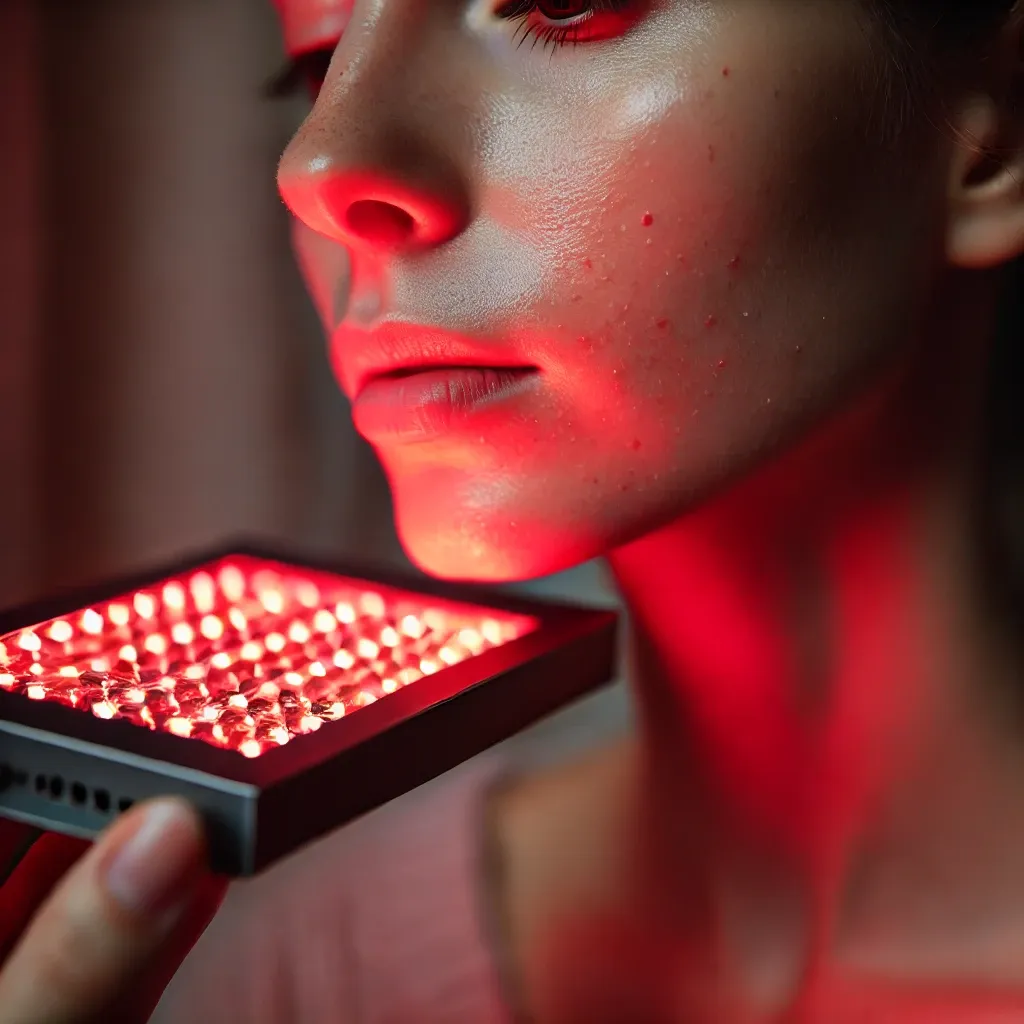

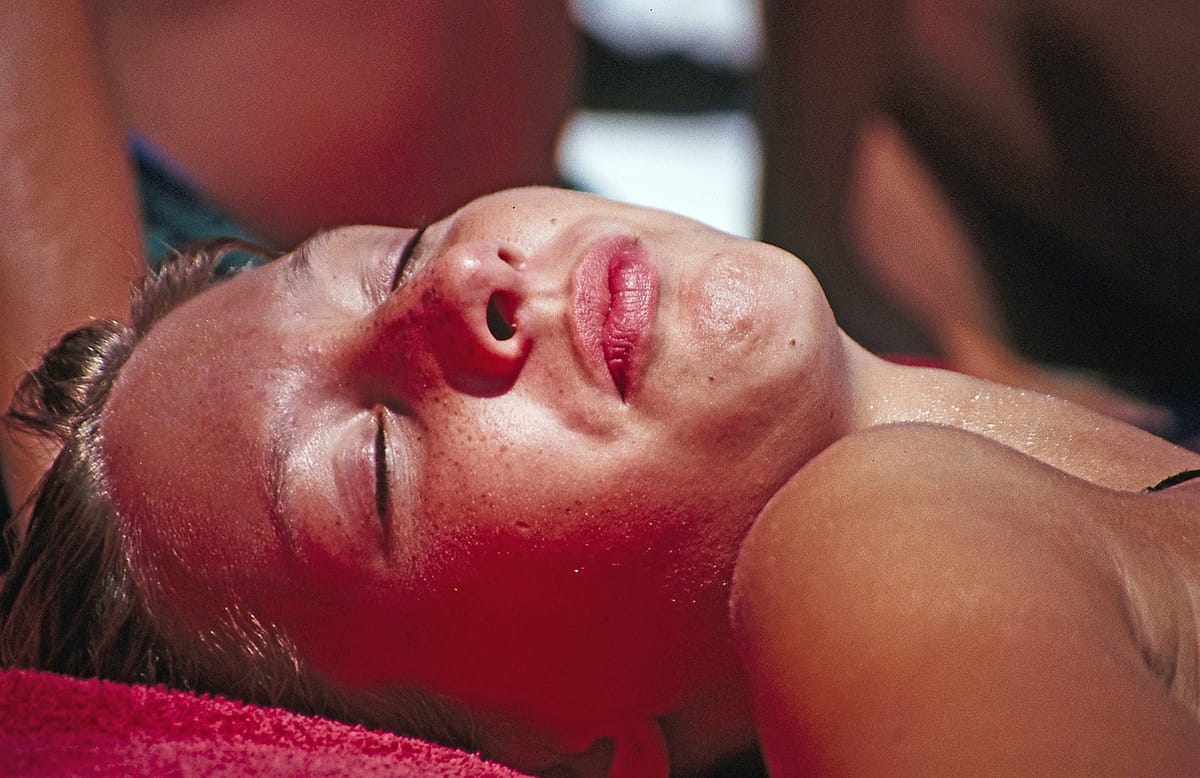
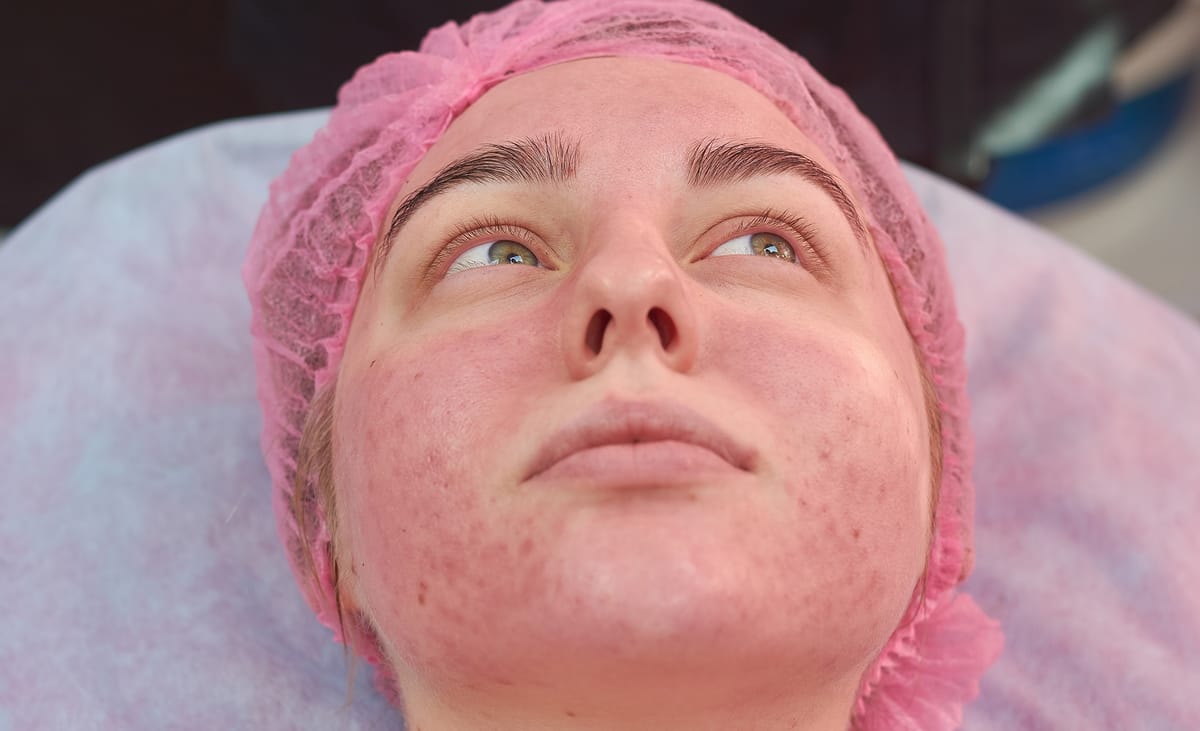
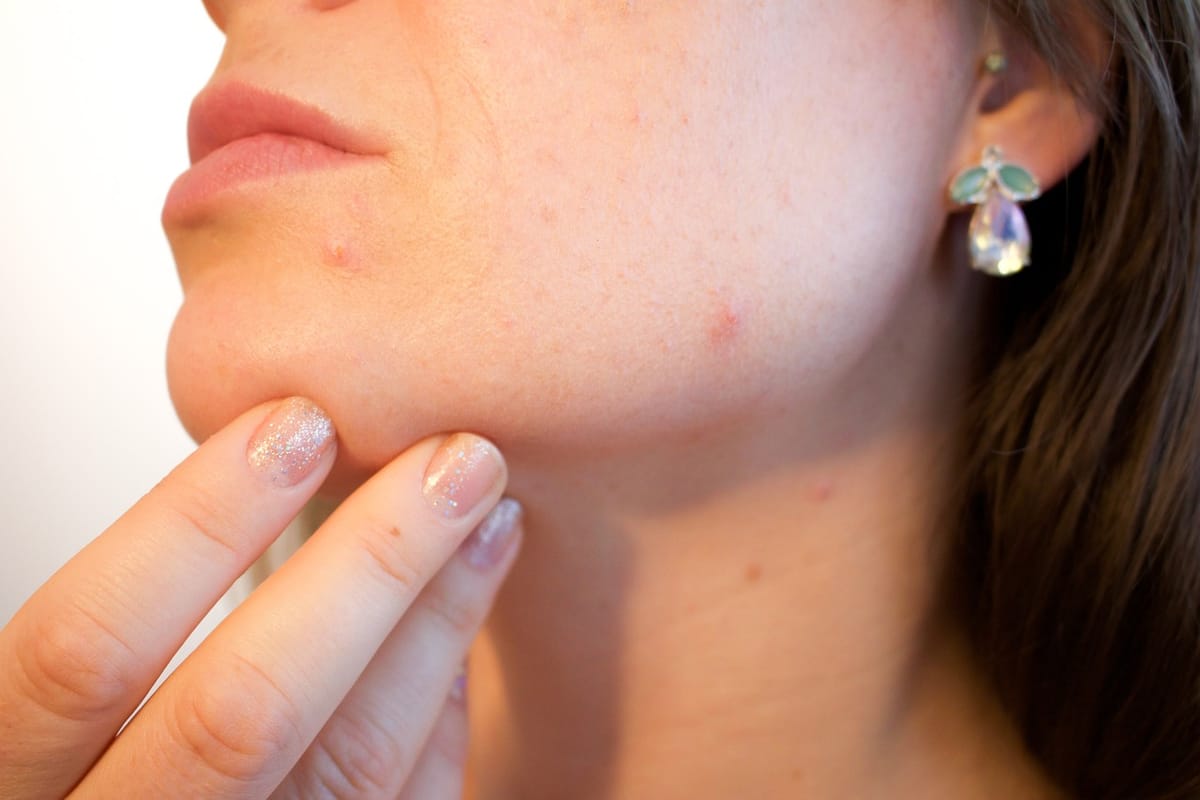
In most of these cases, you can attain great benefits of red light therapy for skin conditions! Just read the individual articles if you want more info, or read my overall guide on skin health and beauty!
Red Light Therapy For Skin
The founder and owner of this website, Alex Fergus, has also published quite a few YouTube videos on this topic worth checking out:
Here Alex consider the outcome of a red light therapy mask study!
An example of the before and after using red light therapy for the skin!
How Do Red And Infrared Light Affect Psoriasis?
Finally, the topic you've been waiting for! I went through Vladimir Heiskanen's Excel sheet which contains 8,500+ studies on light therapy and used all of the publications on red light therapy for psoriasis (14). In that sheet, you'll find four light therapy for psoriasis studies and two reviews on the topic (14).
Visible Light Studies
First up, let's consider the four individual studies - these are all performed on humans:
- First up, a 633 and 830 nm study in 9 human participants with chronic psoriasis (15). Very high doses of 126 and 60 J/cm2 were used here. There were two treatment sessions per day, 48 hours between sessions, and the treatment lasted 4-5 weeks. The insane outcome is the following:
"Follow-up periods were from 3 to 8 months, except in two patients who were lost to follow-up. Clearance rates at the end of the follow-up period ranged from 60% to 100%. Satisfaction was universally very high." (15).
- That outcome is extremely promising and incredible. The only issue here is that it's not a randomized placebo-controlled trial (RCT) but a series of nine case studies. Hopefully the same setup will be tested in an RCT setup. LEDs were also used here, so the results are extremely well-replicable!
- The second study uses 420 nm blue light or 630 nm red light (16). The power output is 100 mW/cm2 for the blue and 50 mW/cm2 for the red light. Treatment time was 20 minutes for 20 sessions in total. The total dose was 120 J/cm2 for the blue light and 60 J/cm2 for the red light. The two light sources were compared. Here's the fascinating outcome:
"linical improvement was seen after treatment with blue as well as after treatment with red light. With respect to scaling and induration, no major differences between both light sources were seen. Improvement of erythema, however, continued in blue light irradiated plaques throughout the whole study period, whereas after red light no significant improvement was seen after six illuminations." (16).
- Again, this is a great outcome and highly promising.
- A third study uses 453 nm blue light for 12 weeks and 44 - 52 treatment sessions - so that's around 3-4 per week (17). Both 100 mW/cm2 and 200 mW/cm2 were tested - so those are huge numbers! The higher-powered group showed more considerable improvements in their psoriasis.
- Fourthly, there's another psoriasis study using 600 - 1,000 nm red and near-infrared light (18). However, this is a case study, and only three out of five participants completed the study. Here's the outcome:
"The three patients who completed the study noted improvement and two had improvements in lesion redness, thickness, or scale, while one was clinically stable. "(18).
- The psoriasis was mild, above, however, but did lead to improvements!
Overall, the outcome of these studies is very positive. And hence, they explain why I see red light therapy as a potential game-changer here - supplemented with blue light!
Psoriasis Review Studies
Two reviews have been published on red light therapy for psoriasis (19; 20). These reviews are slightly less positive than I can, given the publications on the topic. But, reviews usually require more high-quality evidence, such as at least 5 - 10 RCTs on a topic - and the very promising case studies I've listed above aren't considered sufficient evidence.
Here's the outcome of the first review:
"5 original articles met inclusion criteria for our review. Grade of recommendation: B for LED-blue light. Grade of recommendation: C for LED-ultraviolet B, LED-red light, and combination LED-near-infrared and LED-red light." (19)
So, there's decent evidence for blue light, and some evidence for red, near-infrared, and ultraviolet light! I'll come back to the latter option later! Next up, here's the outcome of the second review:
"Based on the efficacy and safety, NB-UVB represents the gold standard for treating psoriasis and atopic dermatitis. The UVB excimer laser and excimer lamp might be the best option for clearing localized therapy-resistant lesions. Home UV phototherapy systems might promote treatment adherence and better compliance of the patients. Vascular lasers, IPLs and LLLT, however, can not currently be recommended for the treatment of inflammatory skin diseases because of the lack of well-controlled studies." (20).
So, this review shows a great benefit for ultraviolet light B (which creates vitamin D in your skin, among others). You can already read that light therapy for atopic dermatitis - the main form of eczema - works well. The review above shows less evidence for red light therapy or "LLLT" (Low-Level Laser Therapy) in science.
Nevertheless, let's check the option of ultraviolet light for psoriasis:
Ultraviolet Light For Psoriasis
Tons of different reviews have been published on ultraviolet light for psoriasis. However, most of these reviews I quickly found are around a decade old or more (21; 22; 23; 24; 25; 26). And surprisingly, few recent reviews are published!
Nevertheless, let's go over these ultraviolet light for psoriasis reviews. Here's the outcome of the first review:
"As a monotherapy, [Psoralen - a plant-based skin treatment and UVA] was more effective than [Narrow-Band]-UVB, and [Narrow-Band]-UVB was more effective than [Broad-Band]-UVB and bath [Psoralen - a plant-based skin treatment and UVA] in the treatment of adults with moderate to severe plaque-type psoriasis, based on clearance as an end point" (21)
UVA and Psoralen were the most effective, then lower wavelength UVB treatments. Here, 41 earlier RCT studies were included!
The second review is also positive about UV exposure (22). Some of the studies used general UVB exposure, while others used excimer lasers:
"In a nonexcimer light study, high doses cleared the most plaques. The 308-nm excimer laser had long-term clearance in 13 of 26 patients. The mean number of UVB treatments in all 9 studies and highest cumulative dose was less than those same parameters in nontargeted phototherapies. Common adverse effects included erythema, blisters, hyperpigmentation, erosion, mild burning, and itching. The predominant setting for excimer units is the office; however, the majority of nonexcimer light devices can also be used at home. Targeted phototherapy should be considered among the treatment options for localized variants of psoriasis." (22)
Next up, here's what the third review states about UVB treatment:
"NB-UVB and excimer laser are effective treatment options for psoriasis; they are administered two to three times weekly until clearance followed by maintenance treatment before discontinuation. Long-term data on NB-UVB indicate that it has a good safety profile" (23)
The fourth review accords with this conclusion, with three weekly treatments for three months (24). This is in case of the plaque-type psoriasis which is most common in 80 - 90% of people (24)! A 2023 review also shows that UVB treatment is likely the most cost-effective (25).
Then, another more recent review investigates salt water baths and UVB treatment (26). The review included eight previous studies (26). Here's the fascinating outcome of that study:
"Salt bath with artificial ultraviolet B (UVB) light may improve psoriasis in people with chronic plaque psoriasis compared with UVB light treatment alone, and there may be no difference in the occurrence of treatment-related adverse events requiring withdrawal. Both results are based on data from a limited number of studies, which provided low-certainty evidence, so we cannot draw any clear conclusions. The reporting of our pre-specified outcomes was either non-existent or limited, with a maximum of two studies reporting a given outcome. [...] Risk of bias was an issue; future studies should ensure blinding of outcome assessors and full reporting." (26)
Again, the quality of the evidence isn't perfect! But often, people working as scientists in medicine have far stricter requirements than I personally do, because they'd like to see multiple RCTs with high numbers of participants investigate a therapy. Doing so is extremely expensive, especially if a therapy such as UVB treatment cannot be patented, so you'll always be lacking there.
I'm happy enough to recommend UVB treatment here, with or without salt baths, for at least the plaque psoriasis. And I'm more than willing to recommend red and especially blue light therapy based on the evidence we currently have:
Should You Do Red Light Therapy For Psoriasis At Home?
Yes, using red light therapy for psoriasis at home is possible. Here, you'll want a red light therapy device with more blue light because of the great benefit that blue light for psoriasis has shown in many studies.
Here I want to recommend the blue combo version of the LightpathLED Diesel panels. Alex has reviewed the original of that panel here:
On the LightpathLED website, you can select the Blue Combo version that has 25% of the total energy going to 450 nm blue light:

So it's a total of 25% red light, 50% near-infrared light, and 25% red light, which is much closer to ideal for psoriasis.
I don't recommend other red light therapy devices that emit blue light because often, they don't contain a large portion of blue light. And, as the red light therapy for psoriasis studies use lots and lots of blue light, at a high dose, it's impossible to get a higher blue light dose if there's not a higher percentage of blue light emitted by the device.
If you want a Blue Combo, go to the LightpathLED website and use code ALEX for a discount.
Next up, if you want a slightly different device, I recommend checking out some of the Chroma products. Alex Fergus has reviewed the Chroma Ironforge here, which is great if you want lots of near-infrared light - I'm only posting this review below to give you an indication of what the device looks like:
However, you don't get the standard Chroma device. Get the Lux Vital, which emits loads and loads of blue light (discount code ALEX saves). You can view that Lux Vital here:

That Lux Vital emits the following wavelengths - Chroma describes how much power is going to each LED:
1050nm NIR 5 watt
935nm NIR 5 watt
850nm NIR 12 watt
760nm NIR 12 watt
670nm Deep Red 12 watt
630nm Red 12 watt
485nm Cyan 20 watt (OPN4 Stimulation)
405nm Violet 50 watt (OPN3 & OPN5 Stimulation)
385nm Deep Violet 50 watt (OPN5 Stimulation)
(I'll write an article on these Opsins (OPN) soon - as very I'm interested in the topic!)
You can get a Lux Vital on the Chroma website (use discount code ALEX to save). Then, there's also an ultraviolet light device - the Chroma D Light - you may want to consider:

There's both a large amount of blue light emitted at 405 nm, and large amount of UVB emitted at 297 nm:
850nm NIR 40 watt
760 NIR 40 watt
670nm Deep Red 40 watt
630nm Red 20 watt
405nm Violet 30 watt (OPN3 & OPN5 Stimulation)
297nm UVB 25 watt (For Vit. D Production)
Overall, this setup may be even better than the Lux Vital, but you're missing the blue light wavelengths higher in the 400 nm range. So, in an ideal world, you may buy and experiment with both.
The huge advantage of both Chroma devices is that you can directly treat the areas affected by psoriasis. So you don't need full-body treatment but can just shine the light on your arms or any other area affected.
However, I'm more comfortable recommending the LightpathLED device above for the face. The Chroma product has insane power output (in a great way!) that may be excessive when you expose your face to it. Of course, wear protective glasses if you use the Chroma products on the face because of their high power output unless you use the device from a long distance.
Given the science that I went through on this topic, the LightpathLED and Chroma devices listed above are your best options for psoriasis, in my opinion, because of the large amounts of blue light in both cases and ultraviolet light for Chroma, that likely very strongly counter psoriasis.
You'll likely have to combine red, near-infrared, blue, and ultraviolet light for the best effects to counter psoriasis. Unfortunately, we don't have the studies that directly compare these setups.
So in an ideal world, you'd like a Randomized Controlled Trial where you have 5 groups or more, with 1) control; 2) blue light only; 3) red and near-infrared only; 4) ultraviolet light only; 5) a combination of red, near-infrared, blue, and ultraviolet light. And, then, the researchers could compare the results between these groups.
A very simple idea but more expensive and harder to execute!
Potential Side Effects Of Red Light Therapy
There are some potential side effects of red light therapy for psoriasis, yes. I've talked about red light therapy side effects in detail in the past. In the case of psoriasis, however, I highly recommend closely monitoring your results and also seeking medical supervision.
So, if you're using ultraviolet light, I recommend doing so after talking to your physician or through a dermatologist. If you do use the products I've listed above, it's at your own risk.
In some cases, if you overdo it, the blue and ultraviolet light can give side effects. That's not speculation but generally accepted science. Melasma and hyperpigmentation are examples here, about which I've written an extensive article.
Generally, I think it's safer to use the blue, red, and near-infrared at your face, at regular power outputs such as 40 - 100 mW/cm2 at the maximum. I wouldn't recommend using ultraviolet light here directly on the face because you can more easily overdo it at that place. And, if you want ultraviolet light exposure for your face, you can also go outside into the sun (with sensible exposure - no sunburns!)
And although it goes beyond the scope of the argument I'm making in this article, you'll also want the protective mechanisms in your skin to work correctly. You'll need good sleep and nutrition for that - and the Standard American Diet won't work here - or anything similar!
In my article about melasma and hyperpigmentation, I've talked extensively about the role of nutrition and sleep in skin repair and protection. Here's a quote from my summary:
"What is underestimated in almost any hyperpigmentation and melasma article on the internet are many other lifestyle and nutrition factors that protect against potential blue and ultraviolet light damage on the one hand and promote skin health on the other hand. Vitamins A, C, E, DHA, collagen protein, and other nutrients can protect against skin damage and make it healthier but few people talk about that topic. And yet, with modern diets, many people are deficient in these - only health "freaks" nowadays take sufficient DHA and collagen, for instance!"
It's extremely likely that the same is the case for psoriasis, in my opinion, and I'd be shocked if your nutrition and lifestyle didn't play a significant role in how the skin protects itself with blue and ultraviolet light exposure. It's like going to the gym and working out extremely hard without eating any additional healthy food, especially protein - no bueno!
Do you want more help on this topic or double-check your routine? Avoid side effects at all costs? Then check out the following option:
Red Light Therapy Before And After for Psoriasis
What about red light therapy before and after psoriasis? We've got good results in our Facebook group that you can join for free:
If you do a search for "psoriasis" in that Facebook group, you'll immediately find about a dozen experiences of red light therapy for psoriasis. You can also interact with group members and ask questions there!
So, all in all, the light therapy for psoriasis options seem extremely bright!
Conclusion: So, Can Red Light Therapy Help Psoriasis? Absolutely!
Clearly, red light therapy and psoriasis are a good match! But, given the tons of different publications I went through, your sessions can be upgraded with blue and ultraviolet light for even better results!
And, yes, there are many unknowns in the currently published science. For instance, there are no direct studies on the combination of red light therapy, blue light, and ultraviolet light exposure. But, given that these types of light are always packed together in nature, I'm not worried about their combination.
Correct dosing is the hardest thing here, as you'd need higher levels of blue light than the ones used in the studies, with a reasonable ultraviolet and red plus near-infrared light dose.
For now, the safest bet, in my opinion, is to do the ultraviolet light dosing through the dermatologist. And dose the red light therapy and blue light addition at home. I've also given another option with the Chroma D Light, however, for people who want to use ultraviolet light dosing at home!
The future is bright - literally - for those suffering from psoriasis. Embrace the light!
Items Mentioned
- LightpathLED Blue Combo - discount code ALEX saves
- Chroma D Light - discount code ALEX saves
- Chroma Lux Vital - discount code ALEX saves
This is a post by Bart Wolbers. Bart finished degrees in Physical Therapy (B), Philosophy (BA and MA), Philosophy of Science and Technology (MS - with distinction), and Clinical Health Science (MS), has had training in functional medicine, and is currently chief science writer at Lighttherapyinsiders.com
Found This Interesting? Then You Might Like:
- Discount Codes, Deals & Recommendations - Red Light Therapy
- Why Red Light Therapy Is A Promising Treatment Option For Cold Sores!
- Does Red Light Therapy Work For Eczema?
- Red Light Therapy & Tattoos: Harm Potential Or Helpful?
- Red Light Therapy For Melasma & Hyperpigmentation: Everything You Need To Know
- The Red Light Therapy Facial Fat Loss Link: Myth Or Reality?
- Red Light Therapy For Face Before And After: Unbelievable Results!
- Red Light Therapy For Sunburn: Prevention and Treatment
- Does Red Light Therapy Help Scars? The Science
- Red Light Therapy For Skin: Beauty Benefits, Potential Complications, And More

